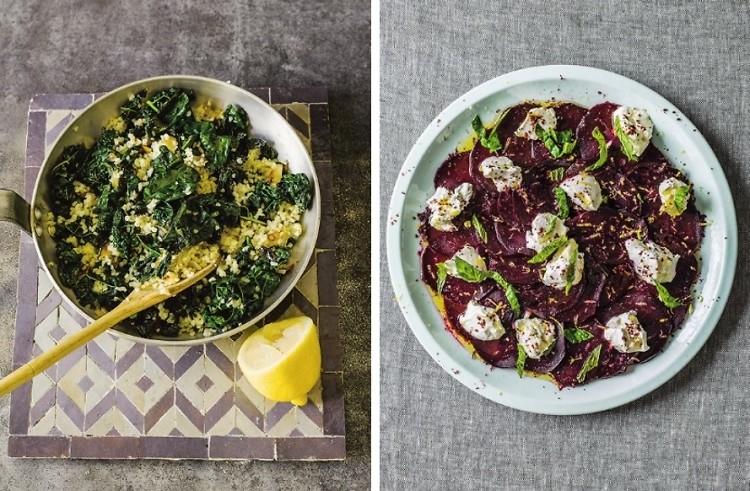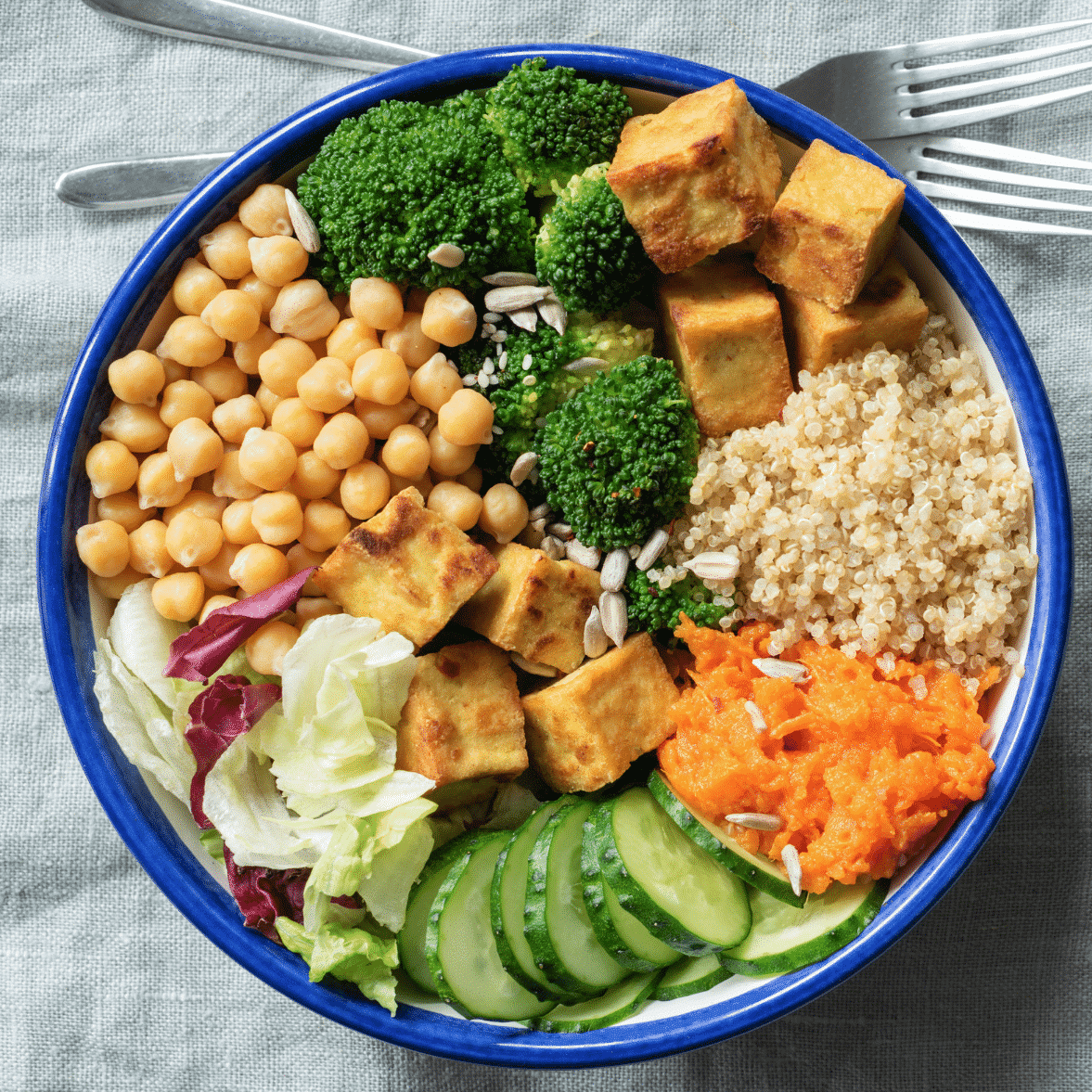How to Make Low-Calorie Middle Eastern Food

Are you craving the rich flavors of Middle Eastern cuisine but worried about the calorie count? Fear not! With a few tweaks and substitutions, you can enjoy the vibrant tastes of the Middle East without compromising your health goals. In this article, we'll explore how to make low-calorie Middle Eastern food that's both delicious and nutritious. So, let's dive in and discover the secrets to healthier Middle Eastern cooking!
Understanding Middle Eastern Cuisine
Middle Eastern cuisine is renowned for its aromatic spices, fresh herbs, and diverse ingredients. From hummus to falafel, these dishes are not only flavorful but also packed with nutrients. However, some traditional recipes can be high in calories due to the use of oil, butter, and heavy sauces. The key to creating low-calorie Middle Eastern meals is to focus on the natural flavors of the ingredients and use healthier cooking methods.
Essential Ingredients for Low-Calorie Middle Eastern Dishes
To create low-calorie Middle Eastern food, you'll need a few essential ingredients:
- Spices: Cumin, coriander, paprika, turmeric, and za'atar are staples in Middle Eastern cooking. They add depth and complexity to dishes without adding calories.
- Herbs: Fresh herbs like parsley, cilantro, and mint are used generously in Middle Eastern recipes. They provide a burst of flavor and are low in calories.
- Grains and Legumes: Whole grains like bulgur, quinoa, and couscous, along with legumes like chickpeas and lentils, are nutritious and filling.
- Vegetables: Middle Eastern dishes often feature a variety of vegetables, including eggplant, zucchini, bell peppers, and tomatoes.
- Lean Proteins: Opt for lean proteins like chicken, fish, and tofu to keep your meals low in calories.
Healthy Cooking Techniques
When it comes to low-calorie Middle Eastern cooking, the method you choose can make a big difference. Here are some healthier cooking techniques:
Grilling
Grilling is a fantastic way to cook lean proteins and vegetables. It adds a smoky flavor without the need for excessive oil. Try grilling chicken skewers or eggplant slices for a delicious, low-calorie meal.
Baking
Baking is another healthy cooking method. Instead of frying falafel, try baking them in the oven. You'll still get the crispy texture without the extra calories from deep-frying.
Steaming
Steaming is a gentle cooking method that retains the nutrients in vegetables. Steamed vegetables can be seasoned with herbs and spices for added flavor.
Using Less Oil
Many Middle Eastern recipes call for a generous amount of oil. To reduce calories, use less oil or opt for healthier alternatives like olive oil. You can also use non-stick cookware to minimize the need for oil.
Low-Calorie Middle Eastern Recipes
Now that you have the basics, let's dive into some low-calorie Middle Eastern recipes that are both delicious and nutritious.
Hummus
Hummus is a staple in Middle Eastern cuisine and can be enjoyed as a dip or spread. To make low-calorie hummus, blend chickpeas, tahini, garlic, lemon juice, and a small amount of olive oil. Serve with fresh vegetables or whole-grain pita bread.
Falafel
Falafel is a popular Middle Eastern dish made from chickpeas or fava beans. To make low-calorie falafel, mix chickpeas, herbs, spices, and a small amount of flour. Shape into patties and bake in the oven until crispy. Serve with a side of tahini sauce.
Tabbouleh
Tabbouleh is a refreshing salad made with bulgur, parsley, tomatoes, cucumbers, and lemon juice. It's naturally low in calories and packed with nutrients. Serve as a side dish or a light meal.
Grilled Chicken Shawarma
Grilled chicken shawarma is a healthier alternative to the traditional shawarma. Marinate chicken breast in yogurt, lemon juice, garlic, and spices. Grill until cooked through and serve with a side of vegetables and whole-grain pita bread.
Stuffed Bell Peppers
Stuffed bell peppers are a delicious and nutritious meal. Fill bell peppers with a mixture of quinoa, vegetables, and lean protein. Bake in the oven until the peppers are tender and the filling is heated through.
Tips for Making Low-Calorie Middle Eastern Food
Here are some additional tips to help you make low-calorie Middle Eastern food:
- Use Low-Fat Dairy: Opt for low-fat yogurt and milk in your recipes to reduce calories.
- Add More Vegetables: Increase the amount of vegetables in your dishes to add volume and nutrients without adding calories.
- Portion Control: Pay attention to portion sizes to avoid overeating.
- Experiment with Spices: Don't be afraid to experiment with different spices to enhance the flavor of your dishes.
Conclusion
Making low-calorie Middle Eastern food doesn't have to be complicated. By focusing on the natural flavors of the ingredients and using healthier cooking methods, you can enjoy the vibrant tastes of the Middle East without compromising your health goals. So, why not give it a try? Your taste buds and your waistline will thank you!
FAQs
What are some common spices used in Middle Eastern cooking? Common spices used in Middle Eastern cooking include cumin, coriander, paprika, turmeric, and za'atar.
Can I make low-calorie falafel? Yes, you can make low-calorie falafel by baking them in the oven instead of deep-frying. This reduces the calorie count significantly.
What are some healthy cooking techniques for Middle Eastern dishes? Healthy cooking techniques for Middle Eastern dishes include grilling, baking, steaming, and using less oil.
How can I reduce the calories in hummus? You can reduce the calories in hummus by using less oil and opting for low-fat tahini or yogurt.
What are some low-calorie Middle Eastern recipes? Some low-calorie Middle Eastern recipes include hummus, baked falafel, tabbouleh, grilled chicken shawarma, and stuffed bell peppers.




Belum ada Komentar untuk "How to Make Low-Calorie Middle Eastern Food"
Posting Komentar